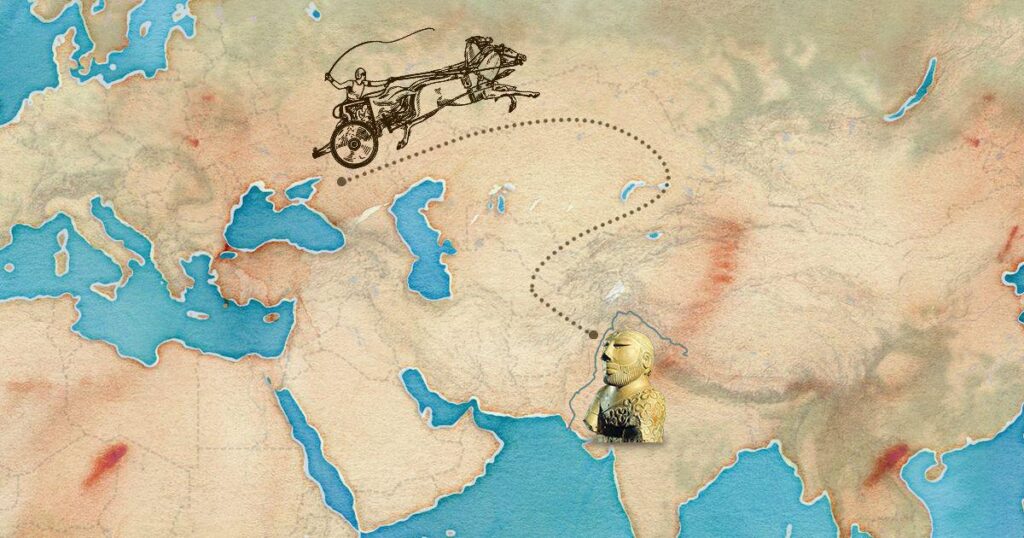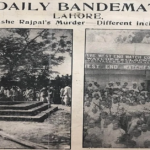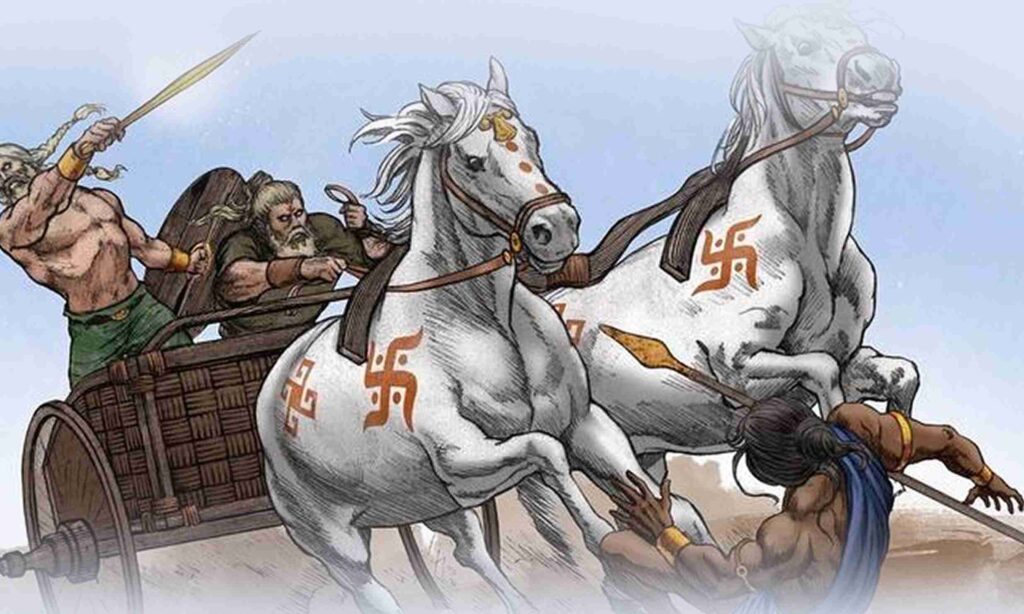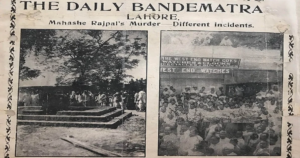The year was 1827. There used to be a soldier in the British Army. His name was James Lewis, who dreamed of buried treasures and old things. He was posted at the British East India Company’s army base in Agra, then one day on July 4, 1827, he ran away from the camp. Sometimes it went to the east of India, sometimes to the south and finally through Punjab, India reached near the Afghan border. He changed his name to Charles Mason and started calling himself a scholar and a doctor. In this connection, he reached Montgomery around 1829. As of today, this is Sahiwal district of Punjab, which is part of Pakistan. Charles Mason had heard somewhere that when Alexander was defeated after coming to India, he was injured, so he hid his treasure near a city, but to tell his story to the world, he had to find something concrete: not just among Alexander’s lost cities. The story of one, but a great treasure. This search took Charles Mason to Afghanistan and sometimes to Iran, but yes, during excavations at many places in the Punjab area, he found very ancient coins. Mason saw the remains of an ancient city in Harappa, about 25 kilometers from Montgomery. Even the local people had no idea who built this city or how old it was. Mason recorded the details of this city in his diary and returned to England. After reaching there he wrote a book. In this book he recorded the stories of his greatness and wrote the details of his travels in the areas of Balochistan, Afghanistan and Punjab. In which the ancient city found in Harappa was also mentioned.

This tale of obsession, betrayal, and the deadly search for the lost city of Alexandria comes from Edmund Richardson, author of The King’s Shadow. Around this period, new secrets of Egyptian and Mesopotamian civilization were emerging. France had captured Egypt. And they were digging there to find out the Egyptian civilization. This news was spreading throughout Europe. There were headlines for the newspapers along with tea and coffee, an educated class read these news, there were debates in the colleges and due to this, the British officers were becoming fascinated with archaeology. In 1861, the British government took over the rule of India from the East India Company. And in the same year, Archaeological Survey of India was established, Alexander Cunningham was made its first director. Cunningham was an officer in the British Army, and he was fond of archeology from the beginning.

Cunningham visited Harappa after reading the book of fugitive soldier Mason. That’s why initially they thought it was a lost Buddhist city. Here he also found some seals. He theorized that this seal was brought from outside India and the remains found in Harappa are one thousand years old.
In 1904, John Marshall became the director of the Archaeological Survey of India. John Marsan entrusted the work of excavation of Harappa to Daya Ram Sahni. Around the same time, some remains were found near another site in Sindh province. This was Mohenjodaro. John Marshall entrusted the inspection of this site to D.R. Bhandarkar and R.D. Banerjee. In 1923, Banerjee told Marshall that this city could be thousands of years old. Banerjee also noted that there were many similarities between Harappa and Mohenjodaro. Notes of Dayaram Sahani and Banerjee were mixed.

Finally, in 1924, John Marshall announced through a London magazine that he had discovered an ancient civilization. Which was named Indus Valley Civilization. Since the first discovery was made in Harappa, it is also called Harappan Civilization. It was a great surprise for archaeologists around the world to see such town planning, what an amazing city people lived in thousands of years ago. And it was made in the shape of blocks. Roads ran through the blocks. Whose width was around 10 meters. Approximately equal to the space for two bullock carts. Apart from this, there were small streets running from between the houses also. Brick was used to build cities. The foundation of the city was made of bricks baked in a kiln. Listen to one story to see the quality of these bricks. When Harappa and Mohenjodaro were discovered, bricks gradually started disappearing from here. It was found that the contractors were using them to build bridges etc. Even the local people took these bricks to lay in their houses.

One special thing is that there are no signs of any royal palace or any special building in these cities. This shows that all the people lived in almost similar conditions. Where there used to be pharaohs in Egypt. For which special buildings were constructed. Structures like pyramids show that special people got special treatment even after death. But there was nothing like that here, everything was the same, every house had its own bathroom. In which tiles were installed. The walls and ground were made waterproof by applying tar on the bricks. There was a drain coming out of the bathroom. Due to which the water went out. This water was received from the network of drains built beneath the city, and these drains took that water out of the city.

Such examples of plumbing and sewer systems are not found in any other civilization. The sewer system was so advanced that even a multi-storey building was connected to it. A drain from each floor came down along the wall and connected to the underground sewer system.
The importance of water in the Indus Valley Civilization can be seen from a special structure. Big water reservoir of Mohenjodaro. Which is called The Great Bath. There is a well behind the water pond, from which water was filled. And there is a drainage way in front of it, through which water used to come out. Nothing can be said exactly as to why and for whom this bath was built, but it is estimated that perhaps it was used as a public ritual.

When all this came out during the excavation, the British were shocked and started feeling that they were in front of India. He could not believe how the history of the Indians he was ruling could be so great. So they played a game here, that is, they prepared a lie that the people who settled this city were not from India, they had definitely come from outside, i.e. from Europe, for example, they were the ancestors of the British. And introduced the notion of two Aryan races, one Western and one Eastern, who migrated from the Caucasus to Europe and India. It was stated that this eastern branch of the Aryan race was more powerful than the original eastern natives, who were easier to conquer. This led to the theory of the Aryan Invasion Theory. This argument was developed by the mid-20th century archaeologist Mortimer Wheeler, who studied several The skeletons were interpreted as victims of conquest. That is, the skeletons were victims and the Vedic god “Indra” was blamed for the destruction of the Indus Valley Civilization, that it was genocide. This arrival of Aryans was called ‘Aryan Invasion Theory’. In these books, Aryans were described as nomads or tribals. They were such nomadic people who had Vedas, chariots, their own language and also the script of that language. This means that they were educated, civilized and cultured nomadic people. This is the most unique example in the world that the nomadic people were more civilized and educated than the urban civilization. The chronology on that is that he came riding a horse and wielding a sword and then started begging with a bowl. But the historians who wrote for money gradually started propagating that the Indus people were Dravidians and the Vedic people were Aryans. Indus Valley Civilization was before the arrival of the Aryans and the Aryans came and destroyed it.

First of all, Rahul Sankrityayan wrote from Volga to Ganga that the Aryans were foreigners and invaded and conquered India. Then in Vedic Aryan Ka Moolsthan written by Bal Gangadhar Tilak, he wrote that the origin of Aryans was in Western Germany, Hungary, Austria and surrounding areas and in B.C. Came to India around 2000. After this Nehru wrote that the Aryans used to roam in the pastures of North Asia and Europe. But when their population increased and there was a shortage of water and fodder, it became difficult for them to get food, so they were forced to go to other parts of the world in search of food. On one hand they spread throughout Europe, on the other hand they reached India, Iran and Mesopotamia.

Raja Ram Mohan Roy went to England and said in his speeches that today I have returned to my fatherland i.e. my real home. After this, historians like Habib and Romila Thapar started writing that the Aryans were outsiders, that is, the one British officer who had coined this theory. Everyone got caught in his grip, yes, except one person, but in the book written by Ambedkar ji, Ambedkar Sampoorna Vangmaya Volume 7 Page No. 321, he writes that “It is wrong to think that the Aryan invaders conquered the Shudras. The first thing is that there is no evidence that the Aryans came from outside India and attacked the natives here. There is much evidence to confirm that the Aryans were the original inhabitants of India.”
The next proof is that see this: Baba Saheb writes on page number 52 of his book ‘Who were the Shudras’ – that as far as the Aryan race coming from outside and conquering the natives here is concerned, there is no such incident in the Rigveda which confirms this. Confirms. Vedic literature is contrary to the view that Aryans came from abroad. There is no specific story in Rigveda about the war between Aryans and Dasas and Dasyus.
But all the gangs, from the neo-Buddhists to the leftist crypto-Christians who follow Ambedkar’s ideology, are still making noise about the same thing, that the Aryans were outsiders, they were invaders and it is amazing that the Mughals who came 700 years ago became Indians. Not only this, according to them, the Aryans came two to two and a half thousand years ago, but five thousand years ago, Dronacharya had refused to teach a Shudra Ekalavya and thousands of years before this, Lord Ram had killed a Dalit sage Sambhuk. They themselves don’t know what it means, but by spreading such lies on social media, they are pushing the agenda forward…
BY -Rajeev Choudhary










More Stories
What message is the movie Maa Kali going to give?
Who is the hunter and who is the prey in the drug game of death?
Is the sun about to set on the British Raj forever?